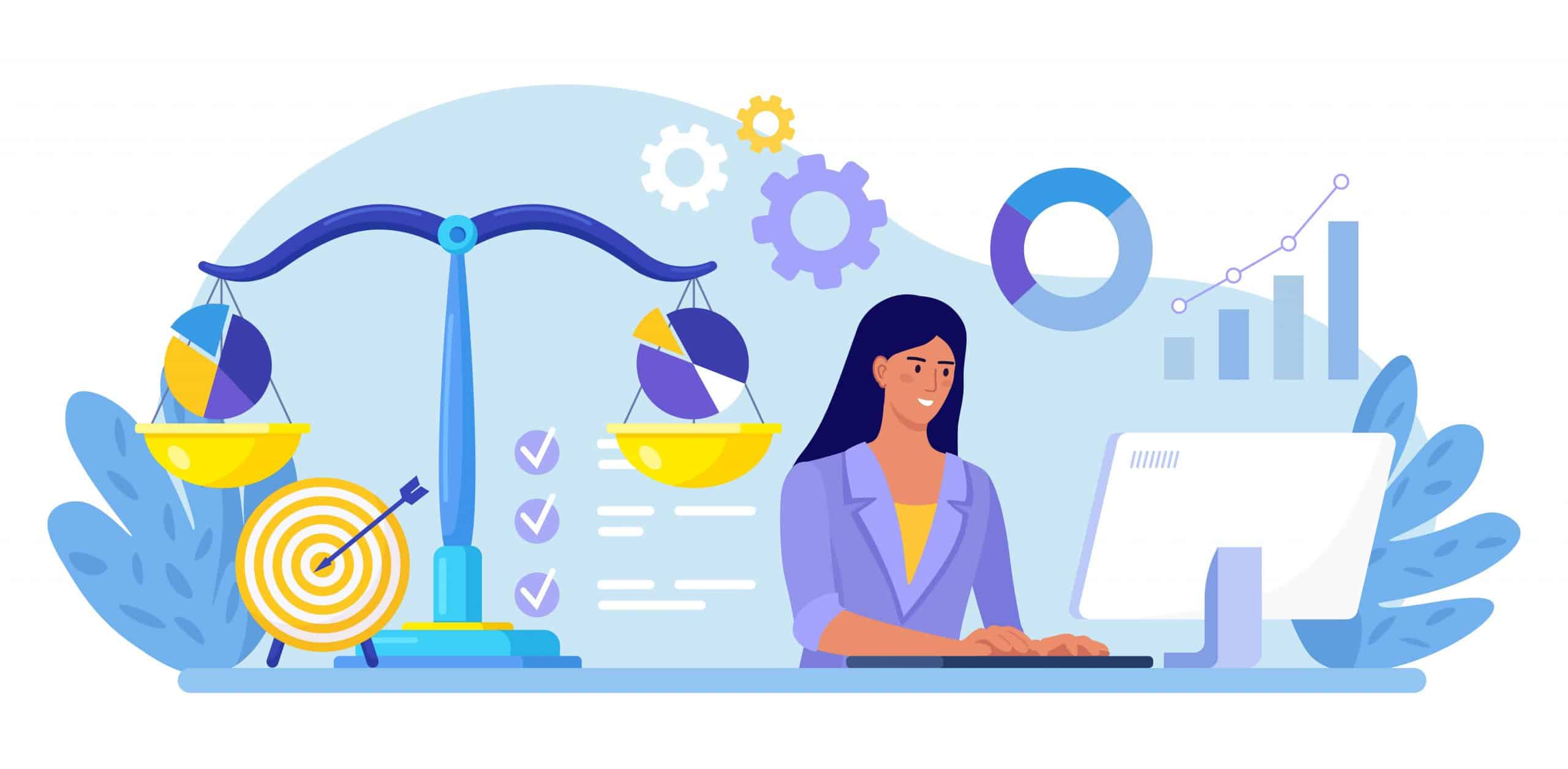Cyber Security in 2025: Market Trends and Top Recommendations for SMBs
The year 2025 has ushered in a new era of technological advancements, but with it comes a heightened risk of cyber threats and increased pressure on cybersecurity professionals. 55% of cybersecurity experts have reported increased stress levels due to heightened cybersecurity threats. Cybercrime is predicted to inflict annual damages of $10.5 trillion by 2025 , emphasizing the critical need for robust cybersecurity measures. This report delves into the evolving cybersecurity landscape, focusing on the trends and predictions for 2025, and provides essential recommendations for small and medium-sized businesses (SMBs) to bolster their security posture.
Cyber Security Market Trends in 2025

The cybersecurity landscape is in constant flux, driven by rapid technological advancements and the evolving tactics of cybercriminals. Several key trends are shaping the landscape in 2025:
- The Rise of Artificial Intelligence (AI): AI is playing an increasingly significant role in both offensive and defensive cybersecurity strategies. AI-powered social engineering attacks are becoming more sophisticated, with adversaries leveraging AI to create highly convincing phishing lures and evade multi-factor authentication (MFA). Businesses also face risks from “shadow AI,” which refers to the use of unsanctioned AI models by staff without proper governance. This can pose a significant risk to data security. To mitigate this, organizations should implement clear governance policies, comprehensive workforce training, and diligent detection and response mechanisms. On the other hand, organizations are also utilizing AI to enhance threat detection and response capabilities.
- Cloud Security Concerns: With the increasing adoption of cloud computing, 85% of organizations are expected to be “cloud-first” by 2025. This shift necessitates a greater focus on cloud security frameworks and measures to protect sensitive data stored in the cloud.
- Cybersecurity Workforce Shortage: The demand for cybersecurity professionals continues to outpace supply. An estimated 3.5 million cybersecurity jobs will remain unfilled by the end of 2025 , highlighting the need for organizations to invest in training and development to address this gap.
- Increased Regulatory Scrutiny: Governments worldwide are implementing stricter cybersecurity regulations to protect critical infrastructure and sensitive data. Organizations must navigate a complex regulatory landscape and ensure compliance with relevant standards. In the US, for example, a new administration in 2025 is expected to lead to an increase in granting bank charters, which could spark fintech expansion and a shift in M&A regulatory posture. In Europe, the expansion of crypto exchanges continues, increasing security scrutiny.
- Cyber Fraud Fusion: The lines between cyber and fraud are becoming increasingly blurred. This trend is expected to lead to a shift in financial services operating models, with the development of “Cyber Fraud Fusion” teams that bring together cyber, identity, and fraud experts to create more comprehensive security solutions.
- Cyber Insurance Market Stabilization: The cyber insurance market is experiencing a period of stabilization, with softening market conditions and increased competition among carriers. This trend is expected to create a more buyer-friendly environment with higher limits and flexible underwriting. However, challenges like ransomware, supply chain attacks, and emerging risks such as generative AI are on the rise, which could impact the market in 2025.
- The Paradox of AI Implementation: While there is a growing recognition of AI-driven cybersecurity risks, many organizations are rapidly implementing AI without the necessary security safeguards. Only 37% of organizations report having processes in place to assess the security of AI tools before deployment, despite 66% expecting AI to have a major impact on cybersecurity in 2025. This highlights a critical gap in security practices.
- Perceived Lack of Progress: Despite increased investments in cybersecurity, there is a perception that the overall direction of cybersecurity is not improving dramatically. Only 25% of individuals feel that cybersecurity is improving dramatically, and only 22% would characterize their organization’s cybersecurity efforts as completely satisfactory.
- Challenges in Securing Funding: Organizations often face challenges in securing funding for cybersecurity initiatives. Only 49% of individuals find it relatively easy to procure funds for cybersecurity activities. This highlights the need for organizations to effectively communicate the importance of cybersecurity investments to decision-makers.
Key Insights
The trends and predictions outlined above paint a complex picture of the cybersecurity landscape in 2025. Here are some key insights for SMBs:
- Increasing Sophistication of Cyber Threats: Cyber threats are becoming more sophisticated, leveraging technologies like AI to evade traditional security measures and target businesses with greater precision. SMBs need to be aware of these evolving threats and adapt their security strategies accordingly.
- The Dual Nature of AI: AI is a double-edged sword in cybersecurity. While it presents new opportunities for cybercriminals, it also provides new tools for defenders. SMBs need to understand both the offensive and defensive applications of AI in cybersecurity to effectively protect themselves.
- Challenges for SMBs: SMBs often face unique challenges in implementing effective cybersecurity measures due to resource constraints, lack of expertise, and limited awareness. Seeking external support and leveraging available resources are crucial for overcoming these challenges.
- The Importance of a Proactive Approach: A reactive approach to cybersecurity is no longer sufficient. SMBs need to adopt a proactive and multi-layered approach to security, combining technology, processes, and people to effectively mitigate risks.
Cyber Security for SMBs in 2025
SMBs often face unique challenges when it comes to cybersecurity. They may have limited resources, lack dedicated IT staff, and be unaware of the latest threats. However, SMBs are increasingly becoming targets for cybercriminals due to their perceived vulnerability .
Cybersecurity incidents now rank among the leading risks for companies of all sizes . In 2025, SMBs need to prioritize cybersecurity to protect their assets, maintain customer trust, and ensure business continuity. Implementing robust cybersecurity measures also offers several benefits for SMBs, including:
- Customer Trust: Secure systems demonstrate to clients that their privacy is valued.
- Business Continuity: Strong cybersecurity helps avoid downtime caused by breaches, ensuring continued operations.
- Regulatory Compliance: Meeting data protection laws through cybersecurity measures helps avoid penalties and legal issues.
- Peace of Mind: With robust cybersecurity in place, businesses can focus on growth without constantly worrying about cyber threats.
Top Cyber Security Threats for SMBs in 2025
SMBs need to be aware of the evolving threat landscape and the specific threats they are most likely to encounter in 2025. Some of the top cyber security threats include:
| Threat | Description | Potential Consequences |
|---|---|---|
| AI-powered phishing attacks | These attacks use AI to create highly convincing and personalized phishing emails that are more difficult to detect. There has been a 300% increase in AI-generated phishing attempts targeting small businesses in recent months. | Financial loss, data breaches, malware infections, reputational damage. |
| Ransomware 3.0 | Ransomware attacks are becoming more sophisticated, with AI-powered automation and targeted attacks . Hackers infiltrate systems, encrypt data, and demand a ransom to unlock it. | Business disruption, data loss, financial loss, reputational damage. |
| Supply chain vulnerabilities | Attacks targeting weak links in the supply chain can expose SMBs to significant risks . | Data breaches, malware infections, business disruption, reputational damage. |
| IoT device exploitation | The increasing use of Internet of Things (IoT) devices in businesses creates new entry points for attackers . Many IoT devices lack robust security measures. | Data breaches, network infiltration, malware infections, disruption of operations. |
| Cloud configuration errors | Misconfigured cloud services can lead to data breaches and unauthorized access . | Data breaches, data loss, unauthorized access to sensitive information, financial loss. |
| Fileless malware | This type of malware operates in memory without leaving traces on the hard drive, making it more difficult to detect . | Data breaches, system compromise, data theft, disruption of operations. |
| Ransomware attacks | Hackers lock your systems and demand payment to restore access . | Business disruption, data loss, financial loss. |
| Phishing scams | Deceptive emails or messages trick employees into sharing sensitive information . | Data breaches, financial loss, identity theft. |
| Insider threats | Employees, whether intentional or accidental, can pose security risks . | Data breaches, data leaks, sabotage, financial loss. |
Top Recommendations for SMBs to Improve Cyber Security in 2025
To mitigate these threats and enhance their cybersecurity posture, SMBs should implement the following recommendations:
1. Prioritize Cybersecurity
- Recognize the importance of cybersecurity and make it a top priority for the organization.
- Conduct risk assessments to evaluate potential business risks and determine the likelihood and impact of potential threats.
- Conduct a gap assessment using a framework like NIST Cybersecurity Framework (CSF) or CIS Critical Security Controls to identify and address security gaps.
- Assess digital assets and categorize and assess vulnerabilities in your digital environment.
- Create a cybersecurity strategy using the results from the assessments. Make sure to focus equally on people, process, and technology.
2. Implement Basic Security Measures
- Implement basic security measures, such as strong anti-malware programs, firewalls, and intrusion detection systems.
- Secure code and conduct regular code reviews to identify and mitigate potential security flaws.
3. Strong Password Policies and Multi-Factor Authentication (MFA)
- Enforce strong password policies that require complex passwords and regular password changes.
- Implement MFA for all critical systems and accounts to add an extra layer of security. This provides several benefits, including:
- Added layer of security: MFA makes it much harder for hackers to gain unauthorized access, even if they manage to steal a user’s password.
- Protection against cyber threats: MFA helps protect against various cyber threats, including phishing attacks, password cracking, and brute-force attacks.
- Reduced risk of data breaches: MFA is essential for minimizing the risk of data breaches by ensuring that only authorized users can access sensitive systems.
- Preventing financial fraud: MFA adds an extra layer of security for financial transactions, reducing the likelihood of fraudulent activities.
- Combating identity theft: MFA ensures that even if credentials are stolen, accessing accounts and sensitive information remains protected.
- Protecting customer data and trust: MFA is essential for upholding data protection duties and avoiding substantial breach fines.
- Multiplying the layers of security: MFA adds an extra layer of protection beyond just usernames and passwords.
- Enhanced user confidence: By implementing MFA, you demonstrate a commitment to data security, fostering trust and confidence among your employees and clients.
- Improved compliance: Many industries have regulations requiring MFA for specific applications.
- Preventing unauthorized access: MFA is a great way for businesses to cut down on unauthorized access, even if passwords get stolen.
- Consider using password managers to help employees generate and manage strong passwords securely.
4. Cyber Insurance
- Consider cyber insurance as a risk mitigation strategy to protect against financial losses from cyber incidents.
- Evaluate cyber insurance policies carefully and choose coverage that aligns with the specific needs and risks of the business.
- Ensure the business meets the cybersecurity requirements of the insurance provider to maintain coverage. These requirements may include:
- Baseline security measures: Business-grade firewalls, professional antivirus software, and MFA for all critical systems.
- Employee cybersecurity training: Regular training to educate employees about cyber threats and best practices.
- Cyber insurance policies often begin as endorsements on small-business policies and may evolve into stand-alone cyber policies as the SMB grows.
- Different industries have specific cyber insurance needs. For example, healthcare providers may need coverage for protecting patient information, while financial advisors require coverage for protecting sensitive financial data.
5. Regular Software Updates and Data Backups
- Establish a regular schedule for software updates and ensure all systems are patched promptly. This is crucial because:
- Software updates often include patches for known vulnerabilities that can leave your systems exposed.
- Cybercriminals actively search for outdated systems to exploit.
- Not all software updates are created equal; security updates are essential because they prevent hackers and malware from exploiting vulnerable software.
- Implement an automated backup system for critical data, including both on-site and off-site backups. This is important because:
- Backups serve as a safety net in case of data loss due to cyberattacks, hardware failures, or human error.
- Regular backups ensure you can recover your data quickly in case of unexpected loss or breach.
- Backups are essential for data recovery, compliance and regulatory requirements, and business continuity.
- Encrypt backups to protect sensitive information and test backups regularly to ensure they are working correctly.
6. Employee Cybersecurity Awareness Training
- Invest in comprehensive cybersecurity awareness training for all employees. This should be included as part of employee onboarding and ongoing training.
- Educate employees about common threats, such as phishing, social engineering, and ransomware attacks.
- Train employees on security best practices, including password management, recognizing suspicious emails, and reporting potential security incidents.
- Conduct regular security awareness drills to reinforce training and assess employee knowledge.
- Cybersecurity awareness training offers several benefits, including:
- Risk reduction: Reduces the risk of falling victim to cyberattacks.
- Enhanced security posture: Strengthens the overall security posture of the business.
- Compliance: Helps ensure compliance with industry regulations and requirements.
- Fostering a culture of cybersecurity responsibility: Employees become more accountable for their actions.
- Data protection: Helps employees understand the importance of data security and how to handle, store, and share data safely.
- Cost savings: Helps avoid costly legal fees, fines, and reputation damage associated with data breaches.
- Reducing human error: Minimizes security breaches caused by employee negligence.
- Improving threat detection: Equips employees to identify and report potential threats.
- Improving employee efficiency: Increases awareness and understanding of cybersecurity best practices.
- Preserving customer confidence: Demonstrates a commitment to data security and builds trust with customers.
- Boosting cyber resilience: Enhances the organization’s ability to withstand and recover from cyberattacks.
- Teaching employees how to distinguish between real institutions and phishing: Helps prevent phishing attacks by educating employees on how to identify fake websites and emails.
- Implement email filters to block malicious attachments and links.
- Verify suspicious links by confirming their authenticity directly with the sender.
- Avoid sharing sensitive information in response to unsolicited messages.
- Report suspected smishing messages to mobile carriers or cybersecurity authorities.
7. Secure Cloud Environments
- Implement strong security measures for cloud environments, including access controls, encryption, and regular security assessments.
- Monitor cloud environments for unusual activity and unauthorized access attempts.
- Ensure cloud providers meet relevant compliance standards and security requirements.
- Carefully configure access controls and permissions to prevent data leaks.
- Use strong authentication methods and encrypt data both in transit and at rest.
- Implement cloud access security brokers (CASBs) to enforce security policies across multiple cloud services.
- Regularly review and update your cloud security settings as your business needs change.
- Consider using cloud security posture management tools to maintain visibility and control over your assets.
8. Secure Remote Work Practices
- Develop a comprehensive remote work policy that addresses security best practices for remote employees. This includes:
- Identifying employee needs: Determine the specific security needs of remote employees, such as secure networks, remote management and maintenance, and robust endpoint security.
- Creating a comprehensive remote work policy: Establish clear guidelines and expectations for remote work security practices.
- Using strong network technologies: Implement modern VPNs or Secure Access Service Edge (SASE) systems to provide secure access to company resources.
- Enforcing endpoint security measures: Implement host firewalls and least-privilege access principles on all devices used for work.
- Enabling MFA and centralized device management: Enhance security and control over remote devices.
- Enforce endpoint protection on all devices used for work, including laptops, smartphones, and tablets.
9. Secure IoT Devices
- Secure Credentials: Use strong, unique passwords and update device firmware regularly.
- Isolate IoT Devices: Create a separate network for IoT gadgets, distinct from your core business systems.
- Conduct Regular Audits: Identify vulnerabilities in connected devices and address them promptly.
- Restrict Internet Access: Avoid granting unrestricted internet access to IoT devices; only allow necessary connections to limit exposure.
10. Network Security
- Set up a separate guest network for visitors. This keeps your main network secure while offering customers or clients internet access.
- Enable the firewall on your router. This adds an extra layer of protection against outside threats trying to access your network.
- Regularly update your router’s firmware. These updates often include security patches that fix vulnerabilities.
- Consider using a VPN for additional security when accessing sensitive data. A VPN encrypts all data going in and out of your devices.
11. Managed Detection and Response (MDR)
- Consider using MDR services to provide 24/7 monitoring and threat response capabilities.
- MDR can help SMBs with limited security resources to effectively detect and respond to sophisticated cyber threats.
12. Privilege Access Management (PAM)
- Implement PAM to control and limit access to critical systems and data.
- PAM helps prevent insider threats and accidental data breaches by ensuring only authorized personnel have administrative rights.
13. Consult with Cybersecurity Experts and Leverage Available Resources
- If possible, hire a chief information security officer (CISO) or work with cybersecurity consultants to develop and implement a comprehensive cybersecurity strategy.
- Cybersecurity experts can provide guidance on risk assessments, security audits, and best practices tailored to the specific needs of the SMB.
- Establish strong IT and security governance policies to guide cybersecurity practices and ensure accountability.
- Leverage free tools and guidance from organizations like the Cybersecurity and Infrastructure Security Agency (CISA) and the Center for Internet Security (CIS). These organizations offer valuable resources, such as vulnerability scanning tools, security best practices guides, and incident response assistance.
Conclusion
The cybersecurity landscape in 2025 presents both challenges and opportunities for SMBs. By staying informed about the latest threats, implementing proactive security measures, and prioritizing employee awareness training, SMBs can effectively mitigate risks and protect their valuable assets.
Cybersecurity is not a one-time event but an ongoing process. SMBs need to continuously adapt their security strategies to address the evolving threat landscape and ensure the long-term success of their business. To get started, SMBs should consider conducting a security audit, implementing MFA, or investing in employee training as concrete starting points. By taking proactive steps to improve their cybersecurity posture, SMBs can confidently navigate the digital landscape and focus on what matters most – growing their business.











